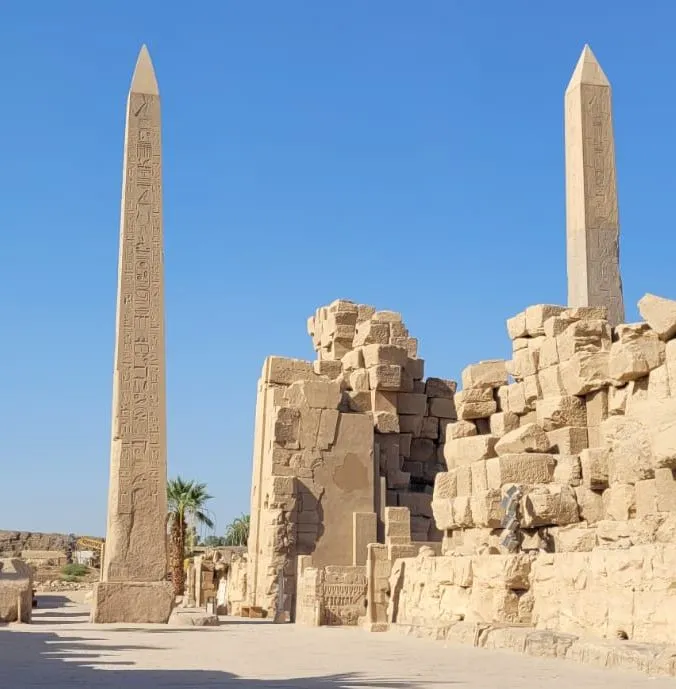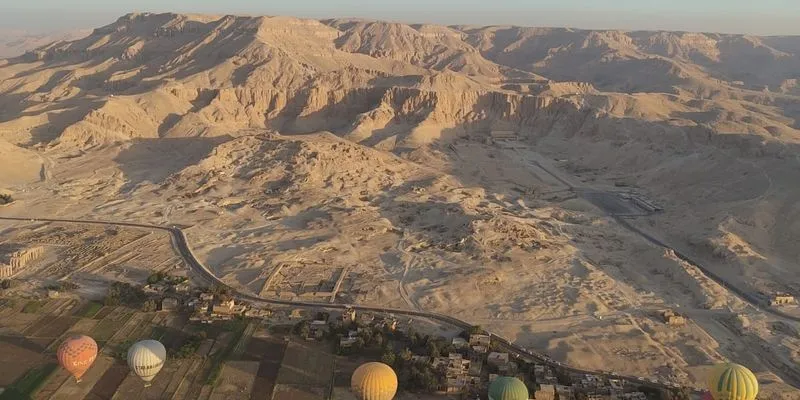Shrouded in mystery and mythology, Egypt’s historical riches are well worth the visit
At its height, Egyptian civilisation was thriving with rich culture, royalty, and mythology. The Romans made it their breadbasket, thanks to the ever-so-giving Nile. The Great Pyramids and other Egyptian monuments stand as a testament to its glorious history.
When I first came across the Egyptian civilisation in the Class 3 history book, I was left wonderstruck. The ancient kingdom in Africa had a mystical character—with pharaohs, mummies, pyramids, gilded temples, and tombs built amid the shifting sands of the Sahara desert.
For decades, Misr—the Arabic name for Egypt—has enamoured travellers and archaeologists alike with tales of mighty pharaohs, the fertile Nile, and architectural marvels that stood the test of time.
The once great civilisation was very modern for its time; the Egyptians mastered the art of preserving dead bodies through mummification, determined the length of the year, invented the water wheel for irrigation, and created an early form of paper called papyrus.
As a country, Egypt is much more than its history, and at the same time, its past is the basis of its existence. YS Life visited the land of the Great Pyramids and mighty pharaohs to see what makes Egypt great.

The Great Pyramids of Giza
Giza
If there’s one image that comes to mind when thinking of Egypt, it’s the Great Pyramids and the Sphinx—located a couple of hours away from Cairo. One of the Seven Wonders of the Ancient World, the Great Pyramids are among the 118 Egyptian pyramids and are both an architectural marvel and mystery.
Ancient Egyptians strongly believed in the afterlife. For the pharaohs, who deemed themselves Gods on earth, attaining the afterlife was imperative.
Fun fact: Astrology also played a huge part in ancient Egypt. The three pyramids in the Great Pyramids complex resemble the belt of the Orion constellation, another name for Osiris, the Egyptian god of the afterlife.
The pyramids—with their many chambers, including the burial chamber—were their way to reach the afterlife. The ceilings were painted in dark hues, with stars depicting the night sky—now lost to time and weather. The many chambers were filled with jewels, artefacts, and funerary items, including terracotta servant figurines and utensils, wooden boats, and sacrificed animals.
One can enter the largest pyramid in the complex through a small tunnel, however, there isn’t much to see in the cramped space.

The Great Sphinx. The Dream Stele stands between the legs of the Sphinx.
Standing tall next to the Great Pyramids is the Sphinx—a mythical creature with the body of a lion and the head of a man. The legend goes that it was discovered, not built, by King Thutmose IV. One can find the Dream Stele—a granite block with the legend inscribed on it—at the feet of the Great Sphinx.
Don’t forget to take a camel ride in the Giza Necropolis behind the Great Pyramids to see the smaller pyramids built for the queens at the time.
Saqqara
A few kilometres from the Great Pyramids lies the Saqqara Necropolis in Dahshur. If the name sounds familiar, you may have heard of the Netflix documentary, Secrets of the Saqqara Tomb.
Here stands the world’s oldest pyramid, built for Old Kingdom pharaoh Djoser by his personal architect and healer, Imhotep. Also known as the Step Pyramid for its structure, one can access it easily and enter the pyramid to find the granite tomb of the pharaoh, buried deep within its wells.

The Step Pyramids of Saqqara, built for Pharoah Djoser by his personal architect and healer Imhotep
However, the chamber had caved in some 2,000+ years ago, destroying the tomb underneath, which was then restored with Lebanon cedar tree trunks that survive to date.
The main Saqqara tomb complex’s entryway is lined with huge pillars, once painted with motifs and housed the idols of gods. The now remnants of the limestone ceiling depict date palm tree trunks. The complex itself is a huge royal dwelling—with now dilapidated alters for worshipping and a huge courtyard where the pharaoh would roam in his afterlife. The main pyramid is in the north and a smaller tomb is in the south, depicting the Lower (northern) and Upper (southern) Egypt the pharaoh ruled.
The Saqqara Necropolis is still being excavated, as is the rest of Egypt. “Only a fraction of ancient Egypt has been unearthed and studied. Almost 80% of it is still unknown to us,” an Egyptian guide told us.

The pillars of the Great Temple at Abu Simbel depicting Ramesses II
Abu Simbel
While many kings built temples to gods, none did it like Ramesses II. Abu Simbel—situated on the western bank of Lake Nasser in the Aswan Directorate closer to the Sudan border—celebrates Ramesses II’s victory over the Hittites at the Battle of Kadesh in 1274 BC, when he conquered the lands of Nubia.
Carved into a rock-solid cliff, The Great Temple of Abu Simbel’s entranceway is iconic with the four humongous, almost God-like statues of Ramesses II guarding it—reminding the insignificance of us mere mortals. The pillars inside the temple, the motifs on the temple walls depicting the pharaoh’s victory over his enemies, and the many worship chambers—are all built in the likeness of Ramesses II.
The main temple is constructed such that the sun shines directly into the inner sanctum twice a year, illuminating three of the four statues of Ramesses and Amun Ra. The fourth statue of God Ptah, associated with the underworld, remains in perpetual darkness.

The Small Temple at Abu Simbel built by Ramesses II for his wife, Nefertari
Next to it stands a smaller temple constructed for Ramesses II's wife, Nefertari, and adorns statues outside built in the likeness of the pharaoh and the queen.
The best time to visit the temple complex is early morning as the sun gets quite harsh in the afternoon. One can visit Abu Simbel from Aswan by road or by boat from the neighbouring Nubia region.

The main temple and courtyard of Philae Temple
Philae Temple
In Egyptian mythology, Osiris, Isis, and Horus hold a great place and respect. Philae Temple, an island on the Nile closer to Nubia, is dedicated to Goddess Isis, the wife of Osiris and the mother of Horus.

Hieroglyphs for Queen Cleopatra
The temple was completed by many generations of Egyptian royalty, with the latest addition commissioned by the Ptolemys during the Hellenistic period. One of its popular visitors was Queen Cleopatra, considered a great devout of Isis.
One can find the hieroglyphs and depictions of Cleopatra, Isis, and other Egyptian gods on the inner walls of the temple, however, these have been defaced by Coptic Christian and Islam invaders, who considered idol worship pagan.
In fact, the Coptic Christians transformed these temples into their churches and one can still see an altar with a cross inscribed there.
Get on a boat either from Aswan or Nubia to reach Philae Island, and take a walk around the temple complex, with its many chapels.
Luxor
From Upper Egypt, we have now reached the Lower Egyptian kingdom of Luxor. Situated on the bank of the Nile, Luxor is divided into East and West banks.
On the eastern side, Egyptians built the temples—most famously the Karnak and Luxor temple complexes, which are placed in a single line stretching a few kilometres along the coast of the Nile. They built them on the East bank so the first rays of the Sun would reach the Gods first, while the West bank served as the resting place for the dead.

Obelisks stand tall in the courtyard of Karnak Temple
The entrance to Karnak Temple is lined with statues of the Sphinx but with the head of a ram, considered to be Amun Ra. One can still see the remnants of a canal outside the temple, constructed to ferry the tonnes of lime and sandstones to build the temple.
Now without a ceiling, the temple pillars showcase various architectural styles and paintings that are over 2,000+ years old. Although some of them are worn out, one can still see the paints used originally on these pillars.
However, the biggest attractions are the obelisks—the ultimate offering to Amun Ra. The most famous obelisk in the complex is the one built by Queen Hatshepsut. At 97 feet tall, the tapered ends of the obelisk were covered in gold, which would reflect the sunlight across the area.
In the adjacent courtyard is a statue of a scarab—a beetle-like insect that Egyptians considered holy and lucky. Don’t forget to circle the scarab seven times for good luck!
In the later ancient kingdoms, pharaohs realised building pyramids was expensive and labour-intensive. To their luck, they found a hill on the west bank of Luxor that looked like a pyramid, and its valley became their resting place.

A bird's eye view of the Valley of the Kings (Centre) and the Mortuary Temple of Queen Hatshepsut (Right).
With almost 63 tombs, the site became famous because of the boy king Tutankhamun, the only pharaoh that rests in his tomb. These tombs are in near-perfect condition with their motifs and paints completely intact and depict the stories of pharaohs and their journey to the afterlife.
Next to the vast valley stands the Mortuary Temple of Queen Hatshepsut. The vast complex was carved from a hill and used by Egyptians to prepare the mummies.

Inside one of the tombs in the Valley of the Kings.
One can fly from Cairo or Aswan to Luxor, or if you want to sail like royalty on the Nile, take a two-day Nile River cruise. If you choose the latter, you are in luck as these cruises stop midway between Aswan and Luxor at the Kom Ombo and Edfu Temples. The best time to visit Egypt is during the winter months when the weather is pleasant enough for travel.
These monuments are a testament to why the Egyptian civilisation is considered one of the greatest. Almost every big museum over the world holds its artefacts, and its 3,000-year history reflects human endeavour and tradition.
However, a large part of Misr, shrouded in mysteries and mythologies, still awaits to be uncovered. And that would take more than just one trip.
(All the photographs were taken on-site by the author)
Edited by Kanishk Singh







